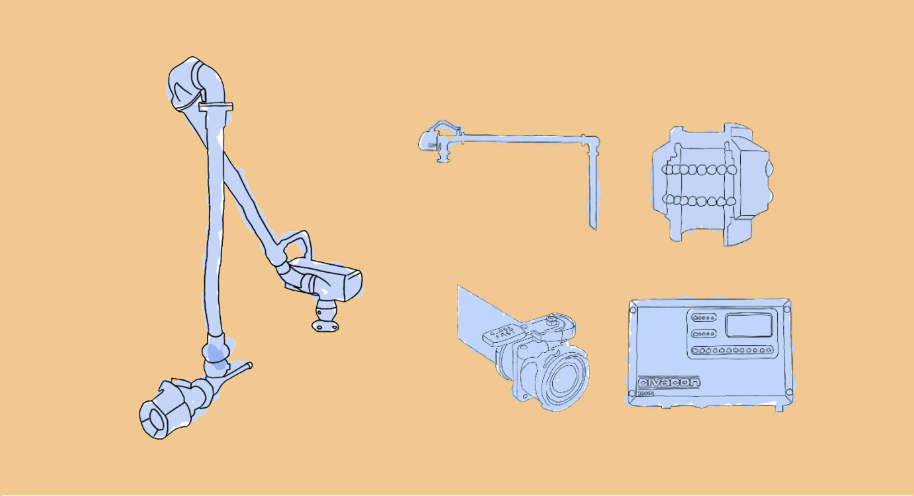Go back to News
Choosing the right relief valve – Our quality is your peace of mind

Vapour loss from storage tanks has long been a subject of concern to storage tank owners and operators. Reducing and controlling the evaporation from storage tanks plays a key role in maintaining product quality, protecting the environment and promoting safety.
Storage tank breather valves perform an important role in :
- Reducing vapour losses which reduces the volatility of the stored product.
- Reducing water ingress through condensation, causing tank corrosion and product contamination.
- Preventing flammable vapour clouds circulating around the facility.
- Reducing toxic vapours affecting the health of operators and surrounding areas.
When CHOOSING the RIGHT breather valves, It is of vital importance that companies make informed choices and not to base their buying decisions around the price alone when the actual cost difference between quality (peace of mind) and potentially unregulated products is negligible in the long-term scheme of things.
HERE ARE THE TOP 7 QUESTIONS ASSENTECH HAS COME UP WITH TO HELP BUYERS MAKE THE RIGHT (AND SAFE) CHOICES
- Ensure the vents are supplied with leakage and calibration certificates. Leakage testing is now part of ISO 28300 or API 2000. Most manufacturers supply only calibration certificates (not including the leakage tests) which are now technically in contravention of API 2000. Testing each vent takes a minimum of 1 hour at the factory and is not something most manufacturers include with every vent. It is usually a cost adder option but we include it in our basic price.
- Air cushioned pallets? (This will increase the valves sealing ability = better safety/air quality)
- Ensure your breather vent has a current pressure and vacuum leakage test certificate which is stipulated by industry Standard, ie, for vents up to 6″ this is 0.5 SCFH at 75% of set point.
- What do the weights look like and what are they made of? Sounds strange but if they are just lumps of lead they will not have the weight distributed evenly = leakage risk. We regularly come across food industry applications with lead weights fitted to vents.
- Preferably FEP Teflon diaphragms to ensure maximum performance.
- Ensure Manufacturers perform leakage test on the vacuum port in addition to the pressure port.
- Are the seats and pallets of a robust enough material (e.g. SS316) to cope with any environmental impacts and wear? (for example an Aluminium valve with an aluminium seat and pallet will wear out much quicker than an aluminium valve with SS316 seat and pallet at a marginal difference in cost)
- For applications within the pharmaceutical, food and drink industries Valves must be supplied with stainless steel weights. This is more expensive to supply than lead but lead is obviously a big problem for applications within the pharmaceutical, food and drink industries. Do we really want a risk of ingestion?
- Ensure the cover bolts are on the outside of the seal. This is a leakage path and the reason why few other manufacturers certify leakage rates.
- Ensure pipe-away vents include drains behind the outlet flange. We have experienced many cases where the outlet pipes trail upwards and do not self-drain. This creates the risk that the pressure pallet can freeze onto its seat as it is constantly immersed in condensate.
- Many vents on the market are fabricated, not cast. This can create corrosion issues.
- Does your supplier really understand your application and is not just interested in getting the sale quickly? Can they offer you sound advice, reliable performance data and detailed product specification sheets? If the supplier shows no interest in the application and says ‘a vent’s a vent’ – walk away! Your staff and your facility are too precious to place into the hands of suppliers that just want your PO number. It takes extra effort, but talk to a few suppliers and compare the advice you get. You’ll know when you are dealing with someone who knows what they are talking about.
- Have you had enough advice to ensure that each valve is adequately sized and delivers the right flow for the conditions it is installed in? (We’ve all heard of sucked in tanks! £££s)
- If it’s a Flame Arrestor, is it specified to the correct Gas Group for your process? (These have changed in the past few years and products such as ethanol now come under the more rigorous Gas Group IIB1)
The vent photographed is a carbon steel 2000A model, approximately six years old. Even though these vents are carbon steel, Groth still makes the lid and seat ring out of stainless steel to ensure the functioning interfaces keep their integrity for the whole life of the valve. This valve will continue to function as new for many years to come. With increased focus on emissions to the environment, features like this will become increasingly important as operators come under tighter pollution controls with an ageing plant.




Contact us
If you would like to place an order or find out more, please email info@assentech.co.uk, call on +44 1726 844 707, or fill in a contact form here.












